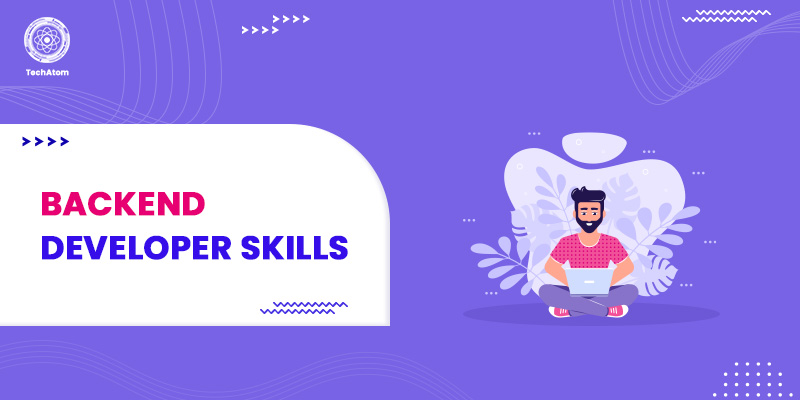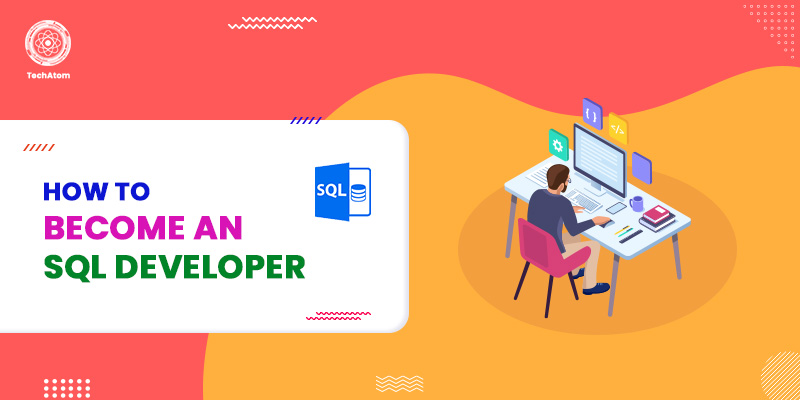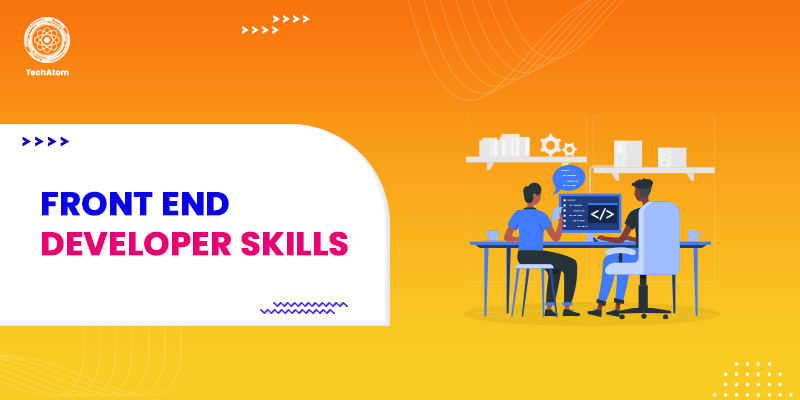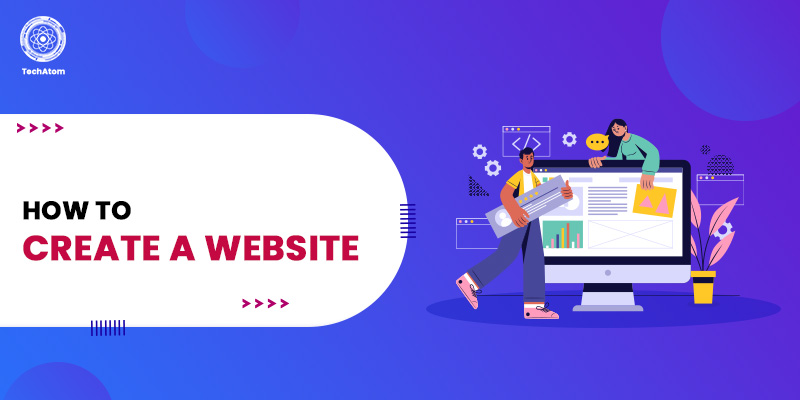Due to the increasing usage of the internet, the web development industry is booming at a more excellent pace. As a result, individuals are shaping their careers in web development. However, web development further divides into three categories: front-end, back-end, and full-stack. Therefore, it becomes essential for individuals to choose the path correctly.
After you choose the right path, the next step is to develop the required skills. For instance, it is essential for a photographer to have an eye for detail and a lens that looks at things uniquely. For an actor, it is crucial to possess the quality of switching between characters. In the same way, it is essential to have some critical back-end developer skills if you want to make a career in back-end development.
In this blog post, we shall walk you through some of the must-have back-end developer skills. Also, we shall help you get acquainted with who exactly a back-end developer is and their roles and responsibilities.
So, let us get started without any delay!
Who is a Back-End Developer?
A back-end developer is a professional with proficiency in writing code that is the backbone of web applications or websites. These professionals are responsible for building and maintaining mechanisms that process data and carry out actions on websites. They are engrossed in security, data storage, and other server-side functionalities that are not visible to end users.
Moreover, back-end developers are responsible for ensuring that a website or web application operates correctly and concentrates on back-end logic, APIs, servers, databases, and architecture. They work with front-end developers, product managers, and testers to create a fully-functional web application or website.
Back-end developers need to have strong technical knowledge, familiarity with various frameworks and libraries, and proficiency in back-end programming languages.
Roles and Responsibilities of a Backend Developer
Have you ever been to a play? What you see is the fantastic performances of the actors. But in the backend, some people work on the props, help the actors change their costumes, care for the curtain falling and rising, and various other important tasks. When you open a website or an app, you see its excellent interface and how easily it works. In the backend, developers ensure that everything runs smoothly and you get the desired data without any problem.
A backend developer is not visible to the users, nor does his work. If you think you are someone who wants to make things seamless, better, and easier for users, this is your field.
The following are some day-to-day duties of a back-end developer in every organization:
- Develop and Maintain Websites: The primary duty of a back-end developer is to leverage various tools, frameworks, and programming languages to create a prototype and convert it into a user-friendly website. While doing so, they need to be careful of the cross-platform compatibility of the website being developed.
- Write High-Quality Code: Another prime responsibility of a back-end developer is to create easy-to-maintain and clean code.
- Carry Out Quality Assurance (QA) Testing: Back-end developers create and oversee test schedules to optimize the user interface and experience. Also, they ensure that the website provides users optimal experience on various browsers and devices.
- Troubleshoot and Debug: Back-end developers have the ability to identify and troubleshoot issues detected during testing and address them to stakeholders, project managers, and the QA team.
- Train and Support: Back-end developers train and mentor junior developers and support the client teams regarding the product.
Difference Between Back-end and Front-end Developers
The following table highlights the differences between back-end and front-end developers:
|
Parameters |
Front-end Developer |
Back-end Developer |
|
What they do |
A front-end developer is responsible for designing and styling the user interfaces for web applications and websites using front-end languages. They entirely focus on web applications' visual aspects, including font, text, color, layout, typography, etc. |
A back-end developer handles the part of websites or web applications that is not visible to end users. They develop the logic of websites and write code that makes the front end operable. |
|
Languages |
HTML, CSS, and JavaScript |
Python, Ruby, Java, PHP, and JavaScript |
|
With whom they work |
Back-end developers, clients, and stakeholders |
Front-end developers, stakeholders, project managers, and the QA team |
|
Frameworks and libraries |
jQuery, Bootstrap, React, AngularJS, EmberJS |
Django, Laravel, Zend, Spring, CakePHP, Symfony |
Must-Have Backend Developer Skills
Here we have listed some must-have skills to become a back-end developer. The list also includes formal education and soft skills alongside technical skills.
1. Programming Languages
We know that a programming language is the foundation of the development of any software or application. So, to create the back-end of applications, back-end developers need a good command of back-end languages. These languages are also known as server-side languages.
Some of the popular programming languages which every backend developer must know are as follows:
2. Python
This programming language is the most popular among developers. Many developers worldwide use it in different development projects, including some of the most popular platforms you use daily. The language fits the criteria to fulfill the needs of developers working on easy and complex projects.
The visualization, functional ease, and programming style have earned it such a reputation. It’s easy, which can make even complex projects easier to write. Besides, it's very easy to learn. As a backend developer, you must know Python.
3. PHP
PHP is different from Python. It is a server-side scripting language that improves an application’s performance. Its work is to interpret scripts and automate the routine process while they are running.
Millions of websites today use PHP since several hosting servers support it. It is cost-effective, easy, and a cap in your feather as a back-end developer. It is not an essential skill, but if you know it, the chances of you getting a job among a hundred others are increased.
4. Java
Java has proved over the years why programmers hold it so highly. It is a platform-independent general-purpose programming language, which backs its wide usage. It promises security and convenience. Its cross-stage capabilities make it a preferred choice for all types of programs.
You should first know that it is not similar to JavaScript. Since it is an object-oriented language, it is not easy, especially for beginners who know nothing about it. You can create a simple app or a complex cross-platform application. It is a robust and widely used language that will help you advance in your career.
5. Ruby
Ruby is similar to Python. The language is known for its convention of love instead of configuration. It is a classy language that works with Rails, making things easier for developers. It helps developers to create programs quickly as it automates repetitive tasks, and its prototyping capabilities are worth mentioning. Learning this language will make your resume look better.
6. Knowledge of Databases
While developing any project, it is essential to understand the importance of a database that stores a large amount of data. A DBMS system is an essential part of every project. As a backend developer, you must possess a good grasp of databases.
Besides databases, you should be well-versed in SQL (Structured Query Language). It is a query-based language to manipulate data stored in relational databases. It requires entering a query to create, modify, remove, or arrange data in databases. Some popular examples of relational databases that require you to have knowledge of SQL are Oracle, MySQL, PostgreSQL, and SQLite.
Apart from this is a NoSQL database, whose name is interpreted in many ways. It is a sort of database that stores data in a format other than the tabular one. A popular example of a NoSQL database is MongoDB.
7. API
API is an acronym for Application Programming Interface. It is the interface through which computers communicate. It stands between two software and helps them communicate. It takes the data from the user’s interface and transmits it to the server. Different software and systems can talk to each other through API.
As a backend developer, the knowledge of the APIs becomes essential. It is through the API that the developers receive data from the user and sends the required one. The developers create these APIs and use them with front-end developers to create a seamless user experience.
8. Knowledge of Frontend Development
Being a backend developer doesn’t mean you should not be equipped with the essential knowledge of front-end designing. To enhance your skill set, you must also learn about the three important pillars of front-end development — CSS, HTML, and JavaScript. These three languages are designing languages the frontend developers use to define how a website, application, or program will look like.
- CSS (Cascading Style Sheet): It defines how web pages will be presented to the users on different browsers, what color will be used, what font will be used, etc.
- HTML (HyperText Markup Language): It gives meaning to a piece of text. It defines how the text will be formatted, if the heading will be bold, how the list will be presented using bullets, how the paragraphs will look, etc.
- JavaScript: Plain text is boring. Imagine a website with no pictures, animation, or plain text. That’s where JavaScript comes in. It is a scripting language that works on the aesthetics of a website. The last element in this list allows you to blow life into your static content, like animated pictures, graphic usage, etc.
These three languages work together to establish how a website will look. Front-end developers use them as styling tools in the most inventive way.
Learning HTML and CSS will help you write better code if you choose JavaScript as your back-end language. Even if you choose other back-end languages, you must have a basic understanding of front-end languages.
9. Git
Imagine working on a file for hours and finding it changed the next day. In such a case, Git saves the day. It is a version control system that shows the past changes made in the file. It helps you know what changes were made, who made them, and the time.
Git is an open-source VCS used widely by programmers around the world. It helps programmers track changes made to files over time. Also, it helps reverse back to any source code version easily.
Besides Git, there are many other version control systems, such as AWS Code Commit, Mercury, SVN, etc. As most developers prefer Git, you can learn and get your hands dirty in Git.
10. Knowledge of Servers
In the backend, the developers interact with servers. A server is a system that hosts and provides all essential information and services, including databases, storage, and security, to other connected applications. In simple terms, it is a computer that responds to client requests. To fulfill the users' requests, backend developers must have a thorough knowledge of the servers since it is the medium through which they send the data to the users.
11. Knowledge of Back-end Frameworks
A framework is a software program that serves as a foundation for developing applications. It takes care of all low-level functionalities and allows developers to concentrate on developing business logic. After you decide upon the back-end programming language, the next thing is to choose the corresponding framework. Each programming language has a plethora of frameworks, and each framework acts as a backbone for that language.
Some popular back-end frameworks include
- Node.js: It is a runtime environment for JavaScript that allows developers to use the language for back-end development.
- Django: It is the most popular and highly preferred framework for Python development. Django is an open-source and free Python-based framework that facilitates the development of web applications.
- ExpressJS: It is a free and open-source back-end framework developed on top of Node.js. It helps you create REST APIs and robust web applications.
- Laravel: It is a free and open-source PHP web application framework that follows the model-view-controller (MVC) design pattern.
12. Formal Education
Every profession requires some degree of formal education, and backend development is no exception. So, to become a back-end developer, a bachelor’s degree in computer science, mathematics, or any relevant field is essential.
If you have another degree, you can learn to code and programming languages and acquire other required skills. It depends on your present situation. If you have just finished school, you have several options. If an undergraduate degree or college is not in your plan, you can learn programming languages or opt for certification courses.
13. Communication Skill
In organizations, you are required to work with a team. A team's success relies on how effectively they communicate, relate to each other’s ideas, and implement them. Your communication skills will play an important role with your fellow backend developers or the frontend team. When you interact, you learn about several other things you don't know as a beginner in the field.
Conclusion
Due to the heavy reliance on the internet today, backend developers are in high demand. Therefore, a back-end developer is a good career choice if you love programming and are interested in learning new technologies. Also, back-end development is the future of technology; hence, pursuing a career in this domain will open up ample opportunities today and in the future.
We hope you might have got a clear idea of what skills you must develop to become a back-end developer. You can opt for an online course or a Bootcamp to develop the abovementioned skills.
People are also reading:
- SEO Best Practices
- Common Mobile App Design Mistakes
- Best Productivity Apps
- Native vs Hybrid Apps
- Agile Project Management Tools
- Best Startup Ideas
- Web Development Technologies
- Software Testing Strategies
- What is Web Designing?
- What is a Single Page Application?
Frequently Asked Questions
1. What do you understand about front-end and back-end development?
Front-end is part of web applications or websites that end users can see and interact with it. On the flip side, the back end is another part of web applications or websites that makes the front end operable, stores and handles data, and is not accessible to end users.
2. What are the popular back-end programming languages?
Some popular back-end programming languages include Python, PHP, Java, C#, Golang, JavaScript, and Ruby.
3. What is the salary of a back-end developer?
The median salary of a back-end developer in India is INR 7.2 lakhs per annum, while it is $81K per year in the United States.
4. What are the three major components of back-end development?
The three major components of back-end development are the server, the application, and the database.
5. Is back-end development a good career?
Yes, back-end development is definitely a good career, as the demand for websites and web applications is rising exponentially in this internet era. As a result, back-end developers are in great demand and get paid sky-high salaries.




